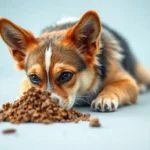
Proper nutrition plays a crucial role in the overall health and well-being of your Labrador Retriever. This breed, known for its friendly temperament and high energy levels, has specific dietary needs that should be met to ensure a long and healthy life. Labrador Retrievers are prone to certain health issues such as obesity and hip dysplasia, making it essential for pet owners to choose the best dog foods for Labs that align with their unique nutritional requirements.
Understanding Labrador Nutrition
Nutritional Needs of Labradors
Labradors thrive on a balanced diet that includes the right proportions of macronutrients and micronutrients.
- Proteins: These are essential for muscle development, repair, and overall growth. Labradors require high-quality animal-based protein sources to support their active lifestyle.
- Fats: Healthy fats are crucial for energy and overall health. They also support skin and coat health and aid in the absorption of fat-soluble vitamins.
- Carbohydrates: While not as critical as proteins and fats, carbohydrates provide energy. Opt for digestible sources to ensure maximum nutrient absorption.
In addition to macronutrients, micronutrients like vitamins and minerals play a vital role in maintaining health. Key vitamins include A, D, E, and B-complex, while important minerals include calcium, phosphorus, and zinc.
Life Stage Considerations
Nutritional Requirements for Puppies
Puppy Labs need a nutrient-dense diet to support their rapid growth and development. High protein content and essential fatty acids are vital at this stage to promote healthy muscle and brain development.
Adult Nutritional Needs
As Labs transition into adulthood, their nutritional needs change. A balanced diet that maintains a healthy weight while providing sufficient energy for their active lifestyle is crucial.
Senior Labrador Dietary Considerations
Senior Labs often require fewer calories due to decreased activity levels. However, their diets should still be rich in fiber and have joint-supporting nutrients to help combat age-related health issues.
Key Ingredients to Look For
High-Quality Proteins
When selecting the best dog foods for Labs, prioritize high-quality animal-based protein sources. Look for:
- Chicken
- Beef
- Fish
These protein sources are not only easily digestible but also packed with essential amino acids necessary for muscle maintenance.
Healthy Fats
Fats are an integral part of a Labrador’s diet. Focus on sources of omega-3 and omega-6 fatty acids, which support skin health and reduce inflammation. Good fat sources include:
- Fish oil
- Flaxseed
Carbohydrates and Fiber
Digestible carbohydrates provide energy for Labs, while fiber aids in digestion. Recommended sources of carbohydrates include:
- Brown rice
- Sweet potatoes
These options are not only energy-dense but also help maintain healthy gut function.
Essential Vitamins and Minerals
A well-rounded diet for Labs should include a variety of essential vitamins and minerals. Key vitamins include:
- Vitamin A: Supports vision and immune function.
- Vitamin D: Essential for calcium absorption.
- Vitamin E: Acts as an antioxidant.
- B-complex vitamins: Vital for energy metabolism.
Minerals such as calcium, phosphorus, and zinc are crucial for bone health and overall physiological functions.
Common Dog Food Types
Dry Kibble
Dry kibble is a popular choice among dog owners for its convenience and cost-effectiveness.
Advantages:
– Promotes dental health by reducing plaque buildup.
– Easy to store and measure.
Disadvantages:
– Some lower-quality kibbles may contain fillers and artificial additives.
Recommended Brands:
1. Royal Canin Labrador Retriever Adult
2. Orijen Original Dry Dog Food
Wet Food
Wet food can be an excellent addition to your Labrador’s diet due to its palatability and moisture content.
Benefits:
– Increased hydration.
– More appealing to picky eaters.
Recommended Brands:
1. Hill’s Science Diet Adult Chicken Recipe
2. Wellness CORE Grain-Free Wet Dog Food
Raw and Homemade Diets
Some pet owners opt for raw or homemade diets, believing these options are more natural.
Safety Considerations:
– Ensure proper handling to avoid bacterial contamination.
– Consult with a veterinarian to ensure nutritional adequacy.
Grain-Free vs. Grain-Inclusive
The debate around grain-free versus grain-inclusive diets continues.
Grain-Free:
– May benefit dogs with specific allergies.
– However, some studies suggest a potential link to heart disease.
Grain-Inclusive:
– Whole grains like brown rice and oats provide energy and nutrients.
– Generally safer and more balanced for most Labs.
Top 5 Best Dog Foods for Labs
Brand 1: Royal Canin Labrador Retriever Adult
Key Features:
– Tailored nutrition for Labs.
– Supports healthy weight and joint health.
Nutritional Breakdown:
– Protein: 26%
– Fat: 12%
– Fiber: 6%
Price Range: $60-$75 for a 30 lb bag.
Brand 2: Orijen Original Dry Dog Food
Key Features:
– Biologically appropriate diet with fresh, regional ingredients.
– High protein content for active Labs.
Nutritional Breakdown:
– Protein: 38%
– Fat: 18%
– Fiber: 5%
Price Range: $80-$90 for a 25 lb bag.
Brand 3: Hill’s Science Diet Adult Chicken Recipe
Key Features:
– Veterinarian-recommended.
– Supports healthy digestion and weight management.
Nutritional Breakdown:
– Protein: 24%
– Fat: 14%
– Fiber: 4%
Price Range: $55-$65 for a 30 lb bag.
Brand 4: Wellness CORE Grain-Free Wet Dog Food
Key Features:
– Grain-free with high protein content.
– Contains added vitamins and minerals for overall health.
Nutritional Breakdown:
– Protein: 36%
– Fat: 15%
– Fiber: 7%
Price Range: $40-$50 for a case of 12 cans.
Brand 5: Blue Buffalo Life Protection Formula
Key Features:
– Real meat as the first ingredient.
– Contains LifeSource Bits for added nutrients.
Nutritional Breakdown:
– Protein: 24%
– Fat: 14%
– Fiber: 6%
Price Range: $50-$60 for a 30 lb bag.
Common Health Issues and Their Dietary Solutions
Obesity
Obesity is a prevalent issue in Labrador Retrievers, often resulting from overfeeding and lack of exercise.
Recommended Dietary Changes:
– Monitor portion sizes.
– Choose lower-calorie dog food options.
Hip Dysplasia
Hip dysplasia is a genetic condition common in Labs.
Nutritional Support:
– Diets rich in omega-3 fatty acids can help reduce inflammation.
– Joint supplements like glucosamine may also be beneficial.
Allergies and Sensitivities
Labradors can suffer from food allergies, particularly to common ingredients like chicken or grains.
Alternatives and Solutions:
– Consider limited-ingredient diets.
– Consult with a veterinarian for allergy testing.
Tips for Feeding Your Labrador
Portion Control
Understanding portion sizes is crucial for maintaining your Lab’s ideal weight.
Guidelines:
– Follow the feeding instructions on the dog food package.
– Regularly monitor your dog’s weight and adjust portions as needed.
Feeding Schedule
Establishing a consistent feeding schedule helps regulate your dog’s appetite.
Recommended Feeding Frequency:
– Puppies: 3-4 meals per day.
– Adults: 2 meals per day.
– Seniors: 1-2 meals per day.
Transitioning Dog Foods
When switching to a new dog food, do so gradually to avoid digestive upset.
Steps for Transitioning:
1. Mix 25% of the new food with 75% of the old food for 3-4 days.
2. Gradually increase the new food proportion to 50%, then 75%.
3. Finally, serve 100% of the new food.
Signs of a Successful Transition:
– Regular bowel movements.
– Good energy levels and coat condition.
Conclusion
Selecting the best dog foods for Labs is essential for their health and well-being. By understanding their unique nutritional needs and considering factors such as life stages, ingredients, and common health issues, you can make informed decisions that promote a long, healthy life for your furry friend. Always consult with a veterinarian for personalized dietary advice to ensure your Labrador is receiving the optimal nutrition they deserve.









